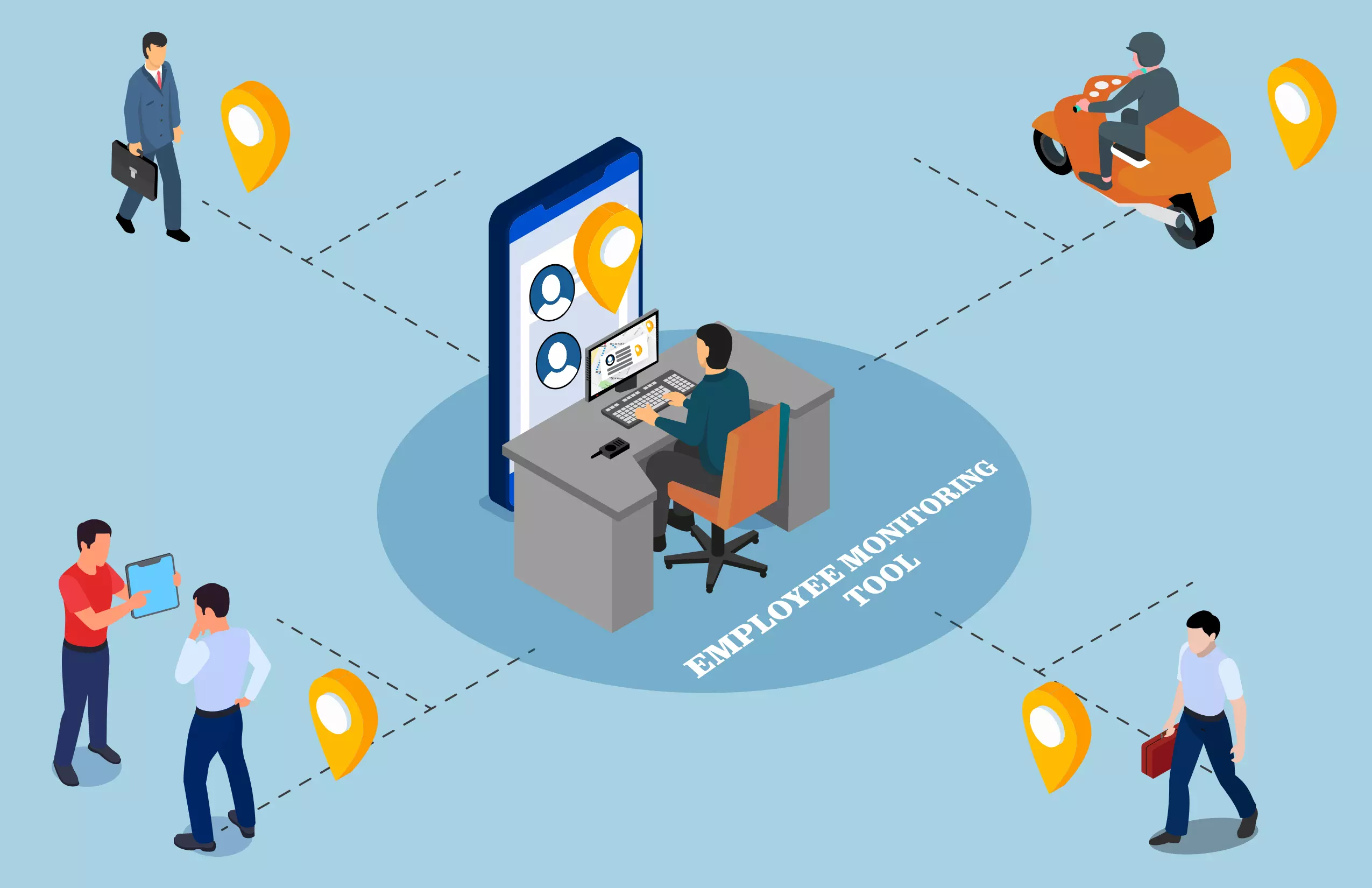
Comprehensive Guide to Employee Monitoring Software: A Modern Workplace Essential
In today’s dynamic business environment, employee monitoring software has become an indispensable tool for companies aiming to optimize productivity, strengthen security, and ensure compliance. With the rapid adoption of remote work, these tools have proven invaluable in maintaining oversight and enhancing workforce efficiency, regardless of location. This article delves into the benefits, features, and ethical considerations of employee monitoring solutions, offering a complete guide to this transformative technology.
What Is Employee Monitoring Software?
At its core, employee monitoring software refers to technology that allows businesses to track and evaluate employee activities during work hours. It typically includes tools for monitoring application usage, websites visited, and time spent on specific tasks.
The primary goal is not to micromanage but to create a transparent environment where managers can understand workflow patterns, address inefficiencies, and protect sensitive data. By analyzing the insights provided by these tools, companies can implement strategies that improve overall productivity while aligning employees’ efforts with business objectives.
For instance, companies managing remote teams rely heavily on these tools to ensure that employees remain productive without compromising their independence. Moreover, industries with strict compliance requirements, such as finance or healthcare, use monitoring software for employees to safeguard confidential data and maintain regulatory standards.
Key Features of Employee Monitoring Tools
Effective employee monitoring tools come with various features designed to address specific organizational challenges. Here’s a detailed breakdown:
1. Time Tracking
Time tracking functionality helps businesses understand how employees allocate their time. This feature records hours spent on tasks, projects, or software, providing managers with accurate data for payroll, productivity analysis, and resource allocation.
For example, a creative agency can identify the time spent on brainstorming versus execution, allowing them to better balance workloads and deadlines.
2. Screen Monitoring
Screen monitoring captures real-time activity on an employee’s computer. This feature ensures that employees remain focused and helps detect inappropriate activities. Businesses often use this to verify compliance with company policies.
3. Activity Logging
Activity logging goes beyond simple time tracking by recording specific actions like keystrokes, mouse movements, and software usage. This granular data helps detect unusual patterns that may indicate potential security risks, such as unauthorized access.
4. Advanced Reporting and Analytics
Reporting tools consolidate the monitored data into actionable insights. Detailed analytics highlight productivity trends, time wastage, and even patterns of peak performance, enabling better decision-making.
The integration of these features ensures that businesses can manage operations seamlessly while addressing potential challenges proactively.
Read Also: Outsourcing Company: Pros And Cons
Benefits of Employee Monitoring Software
The advantages of using employee monitoring tools extend to employers and employees alike, creating a balanced and efficient work environment:
1. Enhanced Productivity
Insights into work habits allow organizations to identify distractions or unproductive behaviors. By addressing these, employees can refocus on meaningful tasks, resulting in greater efficiency.
2. Cost Optimization
Monitoring software helps businesses allocate resources effectively by identifying unnecessary expenses, like unused software licenses or redundant tasks.
3. Improved Accountability
Employees aware of the monitoring process tend to exhibit greater accountability and a stronger commitment to meeting deadlines, reducing the need for constant supervision.
4. Remote Workforce Management
The rise of remote work has amplified the need for transparency. Monitoring tools enable managers to track productivity and ensure that remote teams are meeting objectives without micromanagement.
Addressing Compliance and Privacy Concerns
While the benefits of monitoring tools are undeniable, they must be implemented with sensitivity to legal and ethical concerns:
1. Legal Compliance
Employers must ensure that their monitoring practices adhere to local regulations, such as the GDPR in Europe or the DPA in the US. Non-compliance can lead to severe penalties and reputational damage.
2. Employee Privacy
Transparency is vital. Informing employees about what is being monitored and why builds trust and ensures ethical usage of the software. Businesses should clearly define boundaries to respect personal privacy during non-work hours.
Practical Use Cases Across Industries
The applications of employee monitoring software vary widely, making it a versatile solution across industries:
1. IT and Security
Organizations with sensitive data, such as IT firms, use monitoring tools to detect unauthorized access or potential breaches.
2. Creative Agencies
By tracking project timelines, creative teams can better allocate resources and streamline collaboration.
3. Healthcare
Hospitals and clinics ensure compliance with HIPAA by monitoring systems that handle patient data.
4. Call Centers
Monitoring tools track customer interactions, helping supervisors evaluate service quality and improve employee training programs.
Choosing the Right Monitoring Software
Selecting the most suitable employee monitoring solution involves considering various factors:
1. Scalability
Ensure the tool can accommodate future growth. As the company expands, the software should seamlessly support more users and devices.
2. Integration Capabilities
The best solutions integrate easily with existing tools like project management software or CRM platforms.
3. User Experience
A user-friendly interface ensures that managers and employees can utilize the software effectively without extensive training.
4. Customization
Every organization has unique needs. Software that offers customizable settings allows businesses to tailor monitoring practices to their requirements.
Best Practices for Implementation
To maximize the benefits of employee monitoring tools, organizations should follow these best practices:
1. Clear Communication
Inform employees about what is being monitored, its purpose, and how the collected data will be used. Transparency fosters trust and mitigates concerns.
2. Establish Policies
Define acceptable usage and clearly outline consequences for policy violations. Ensure these policies are documented and accessible.
3. Regular Feedback
Use the insights from monitoring software to provide constructive feedback. This helps employees improve while avoiding feelings of surveillance.
Emerging Trends and Future Prospects
The evolution of employee monitoring software reflects the changing nature of work:
1. Artificial Intelligence (AI)
AI-powered monitoring tools provide predictive analytics and detect anomalies more efficiently, ensuring robust security and proactive management.
2. Hybrid Work Models
As hybrid work environments become the norm, monitoring tools are adapting to accommodate flexible work arrangements without compromising transparency or efficiency.
3. Employee Well-Being
Modern tools are incorporating wellness features, such as tracking screen time and encouraging breaks, to promote a healthier work-life balance.
Conclusion
Employee monitoring software has proven to be a game-changer for modern workplaces. It enhances productivity, ensures security, and enables businesses to adapt to evolving work environments. However, ethical implementation and a clear focus on transparency are essential to maintain trust and compliance.
By leveraging the right tools and following best practices, companies can create a balanced workplace that values both organizational success and employee satisfaction.
For a deeper dive into the benefits of monitoring solutions, visit Kickidler’s website. Whether managing remote teams or ensuring compliance, the right software can be your partner in success.




